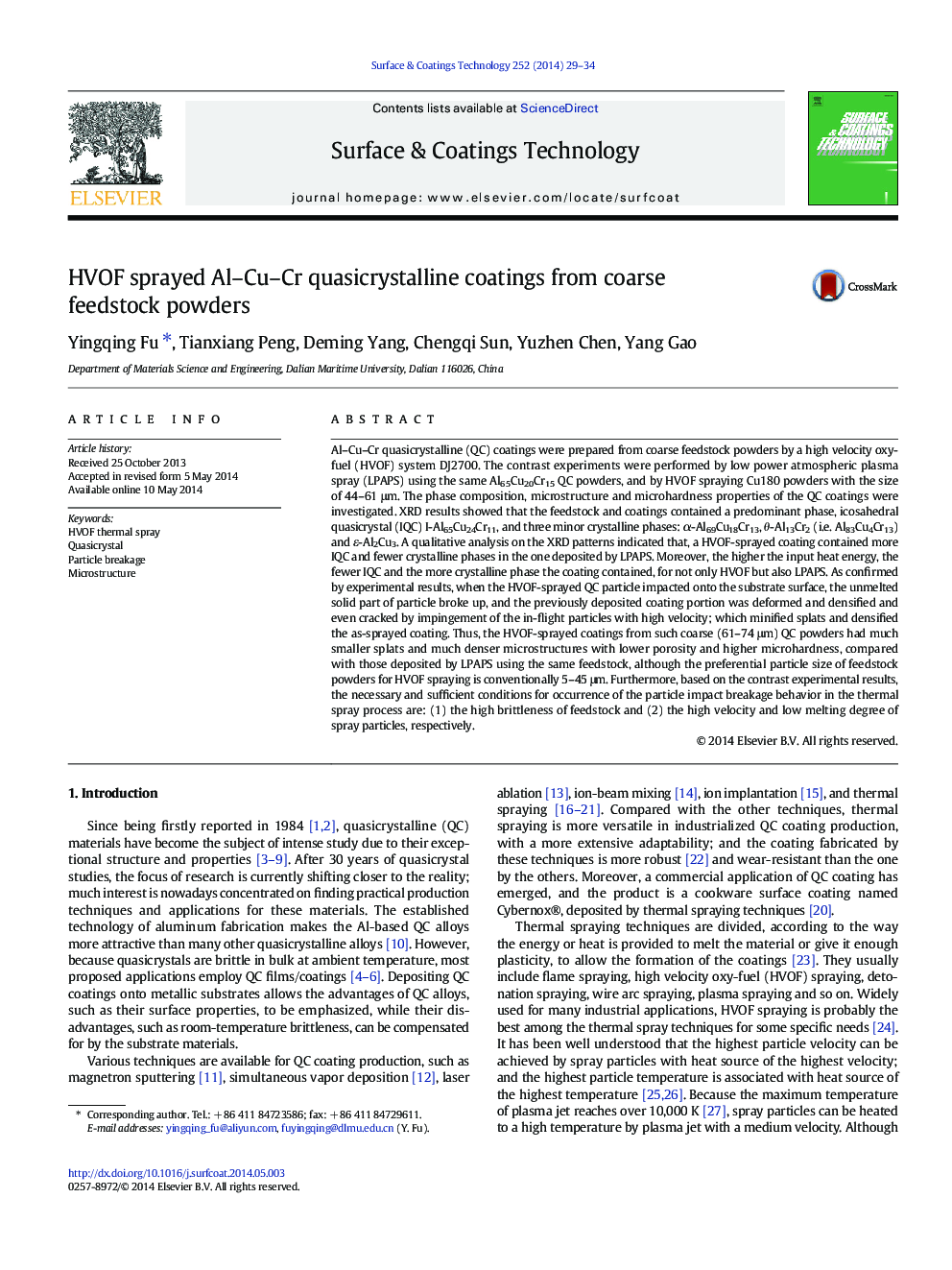| کد مقاله | کد نشریه | سال انتشار | مقاله انگلیسی | نسخه تمام متن |
|---|---|---|---|---|
| 1657474 | 1517626 | 2014 | 6 صفحه PDF | دانلود رایگان |

• We examine particle breakage of Al65Cu20Cr15 quasicrystal coarse powders in HVOF.
• Particle breakages after impacts minify splats, deform and densify the coating.
• High brittleness of thermal spray particle is necessary for its impact breakage.
• High velocity and low melting degree of particle are sufficient for its breakage.
• Particle impact breakage contributes to a high-quality quasicrystalline coating.
Al–Cu–Cr quasicrystalline (QC) coatings were prepared from coarse feedstock powders by a high velocity oxy-fuel (HVOF) system DJ2700. The contrast experiments were performed by low power atmospheric plasma spray (LPAPS) using the same Al65Cu20Cr15 QC powders, and by HVOF spraying Cu180 powders with the size of 44–61 μm. The phase composition, microstructure and microhardness properties of the QC coatings were investigated. XRD results showed that the feedstock and coatings contained a predominant phase, icosahedral quasicrystal (IQC) I-Al65Cu24Cr11, and three minor crystalline phases: α-Al69Cu18Cr13, θ-Al13Cr2 (i.e. Al83Cu4Cr13) and ε-Al2Cu3. A qualitative analysis on the XRD patterns indicated that, a HVOF-sprayed coating contained more IQC and fewer crystalline phases in the one deposited by LPAPS. Moreover, the higher the input heat energy, the fewer IQC and the more crystalline phase the coating contained, for not only HVOF but also LPAPS. As confirmed by experimental results, when the HVOF-sprayed QC particle impacted onto the substrate surface, the unmelted solid part of particle broke up, and the previously deposited coating portion was deformed and densified and even cracked by impingement of the in-flight particles with high velocity; which minified splats and densified the as-sprayed coating. Thus, the HVOF-sprayed coatings from such coarse (61–74 μm) QC powders had much smaller splats and much denser microstructures with lower porosity and higher microhardness, compared with those deposited by LPAPS using the same feedstock, although the preferential particle size of feedstock powders for HVOF spraying is conventionally 5–45 μm. Furthermore, based on the contrast experimental results, the necessary and sufficient conditions for occurrence of the particle impact breakage behavior in the thermal spray process are: (1) the high brittleness of feedstock and (2) the high velocity and low melting degree of spray particles, respectively.
Journal: Surface and Coatings Technology - Volume 252, 15 August 2014, Pages 29–34